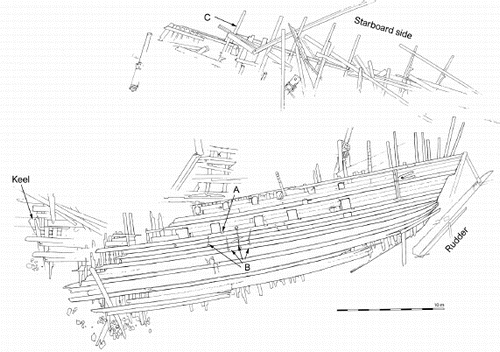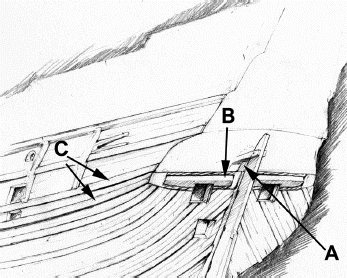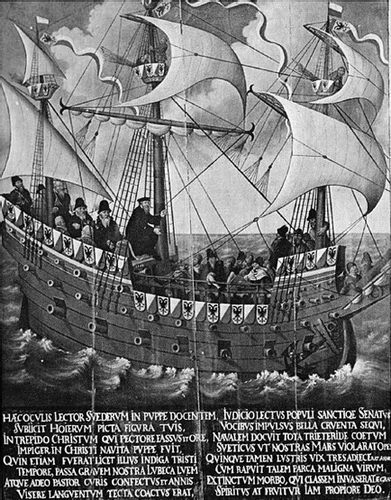Figures & data
Figure 1 The sinking of ‘Mars’ was a spectacular victory for the Danish–Lübeckian fleet. This is the title page of a ballad, written in Low German, describing the battle. (After Ekman and Unger, ‘Svenska flottans sjötåg’, 177)

Figure 2 The famous naval architect Fredrik Henrik af Chapman calculated the dimensions of ‘Mars’ in the early nineteenth century, here he is depicted by Lorens Pasch the Younger (Nationalmuseum, Stockholm, Sweden, NMGrh 1701).

Figure 3 Preliminary site plan. The exploded bow is to the left and the remaining hull has broken into three more or less intact parts. A notch in the wale for the bracket that supported the channel, B chains from the shrouds, C the foremost top timber from the stern castle. (Author’s drawing)

Figure 4 Reconstructed side view of ‘Mars’. The grey shadow provides an idea of how much of the hull is missing. The original length between the posts has been calculated to be 43–45 metres between stem and sternpost. The reconstruction is drawn as if this distance was 44 metres. (Author’s drawing)

Figure 5 Reconstruction of the stern revealing how the different parts were originally attached to each other. A stem post, B wing transom, C wales. (Author’s drawing)



